Looking for translations that are both fast and accurate? Post-editing of automated translation, often referred to as machine translation post editing is here to help!
Automated translation systems use engines, translation memory, and terminology enforcement. Even when these systems work together, they can overlook important details. That’s where post-editing comes in, fixing errors and keeping translations clear and reliable.
If you’re a business or technical user, you might wonder what post-editing really does and why it matters for your translations. This guide will break it down for you, showing how post-editing leads to consistent and dependable results, especially for those in e-commerce and SaaS industries.
What is Post-Editing in the Context of Automated Translations?
Have you come across a translated document that feels a bit off? Maybe it uses awkward phrases or just doesn’t sound right for your audience. Post-editing can help. It takes machine-generated text and turns it into ready-to-use content that aligns with your brand’s voice.
Automated tools rely on natural language processing to translate content quickly, but they can sometimes produce results that need adjustment.
How Does Post-Editing Improve the Quality of Translations?
Post-editing is a task carried out by skilled translators to improve translations generated by automated systems. Instead of developing content from scratch, post-editing works with pre-translated content material to achieve accuracy and consistency in terminology and style throughout the document.
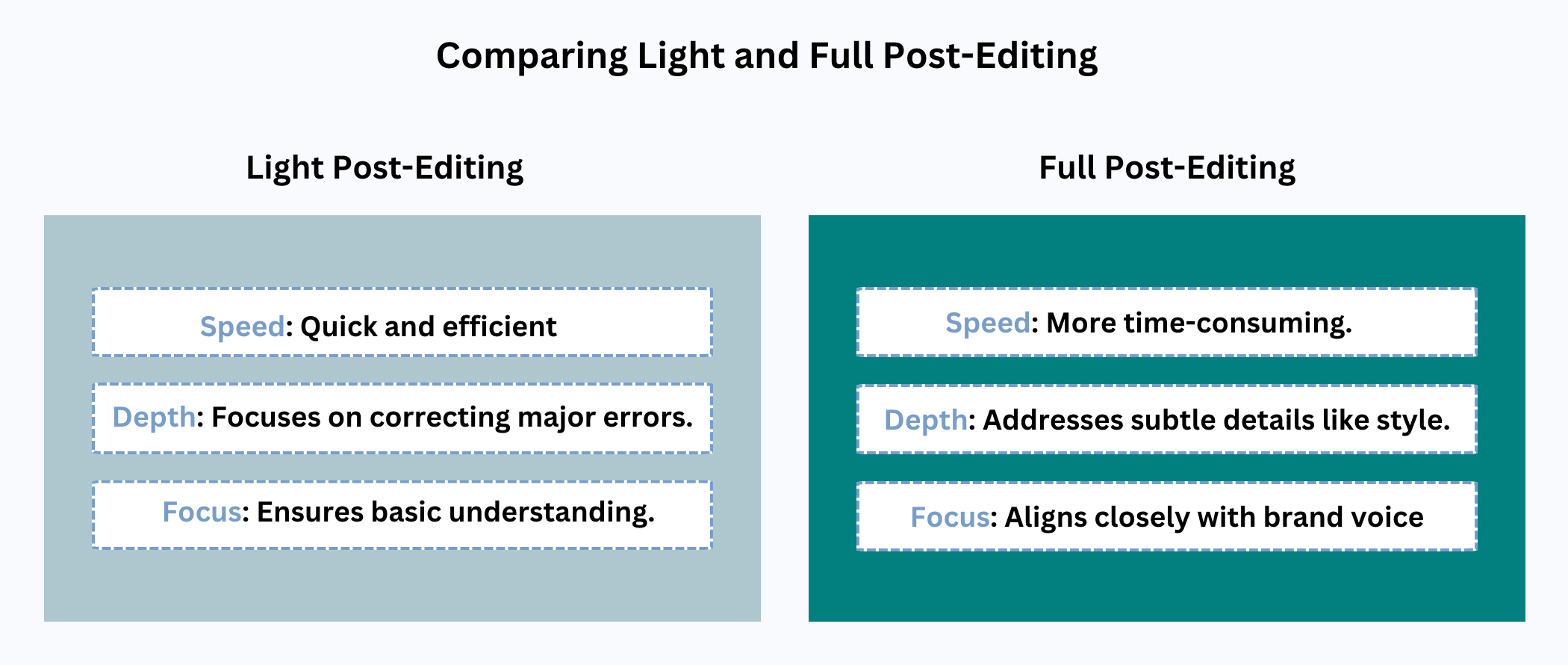
There are two levels of this process, often referred to as Human Translation Post Editing MTPE, which include:
- Light Post-Editing: Focuses on correcting major errors. It’s quick and makes the translation understandable and suitable for basic use. Think of it as a basic review to catch glaring mistakes.
- Full Post-Editing: This is a more comprehensive process, addressing style, tone, and subtle details. It’s perfect when you need the translation to align closely with your brand’s voice and meet high quality standards.
Why Are Standards Like ISO 18587 Important?
High-quality post-editing involves adhering to standards like ISO 18587. This standard outlines the skills and competencies a post editor should have to deliver excellent results. In the translation industry, standards like ISO 18587 guide this process.
It includes:
- Using client-approved terminology glossaries.
- Respecting the style and conventions of the target language.
- Delivering the final document in the original format.
- Making sure the content suits the intended audience.
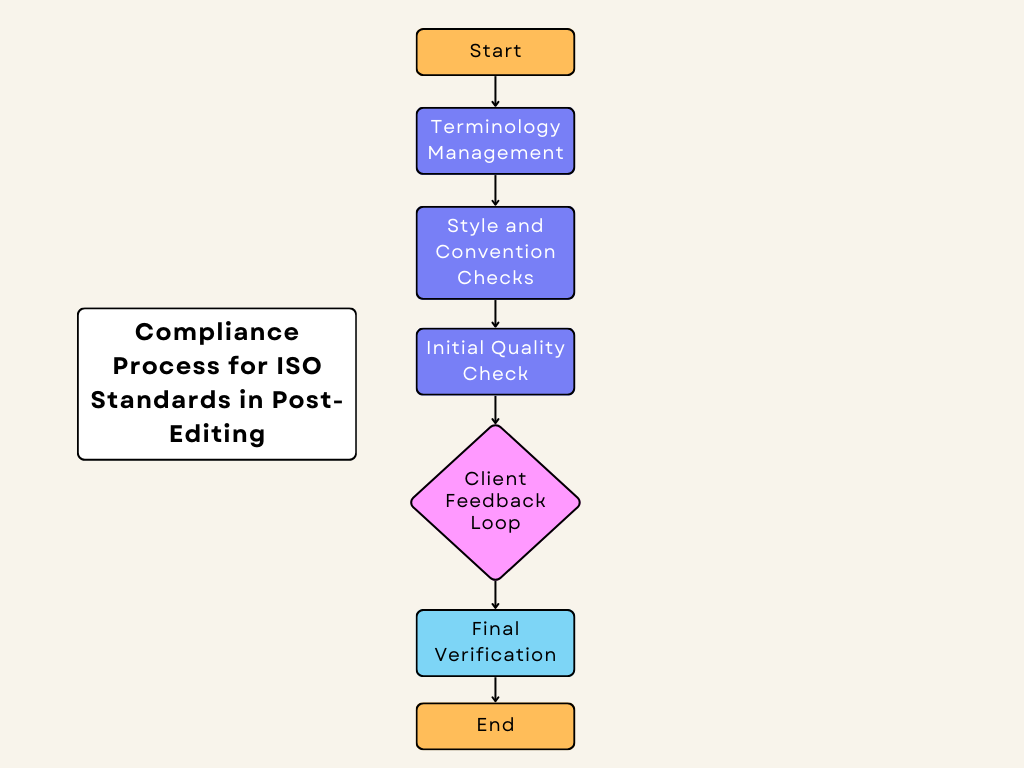
For example, if you’re an e-commerce business launching a new product in multiple countries, compliance with these standards means that your product descriptions are accurate and culturally appropriate, helping your brand’s global appeal.
ISO 18587 is an important standard for post-editing, but other standards may also be relevant depending on the type of translation you require. For example, ISO 17100 focuses more broadly on human translation services, encompassing the entire human translation process and the qualifications of the translators involved.
Why Should Your Business Invest in Post-Editing for Automated Tools?
When you rely solely on automated translations, errors can happen. These mistakes can range from minor typos to big misunderstandings that confuse your audience.
Post-editing catches these errors, making sure your translations are accurate and say what you mean. This is very important for businesses in areas like e-commerce and SaaS or, more generally, content intended for end-users.
When you incorporate machine translation into your workflow, post-editing is important part of the translation process to make sure the output meets your quality standards.

Let’s say you’re about launching a product with a translation error in the description. It could mislead buyers and harm your brand’s reputation.
So, post-editing helps avoid such problems and makes sure that your message is always clear.
Why It Is not Easy to Keep Your Brand Voice Consistent in Many Languages?
Your brand has a unique voice, and keeping that voice the same across different languages is key.
Automated translations might not always reflect your brand’s tone or style. Post-editing makes sure translations match your brand guidelines, keeping them consistent in all markets. It can help manage the complexities of different language pairs.
For example, if your brand is know for being friendly and approachable, post-editing can adjust translations to keep that feeling, even in languages that might seem formal.
How Does Post-Editing Improve User Experience?
A good user experience is very important and cannot be overemphasised. When you have awkward or confusing translations, it can disrupt the user experience.
So, post-editing smooths out these rough spots, and that way, you can now give your users clear and engaging content.
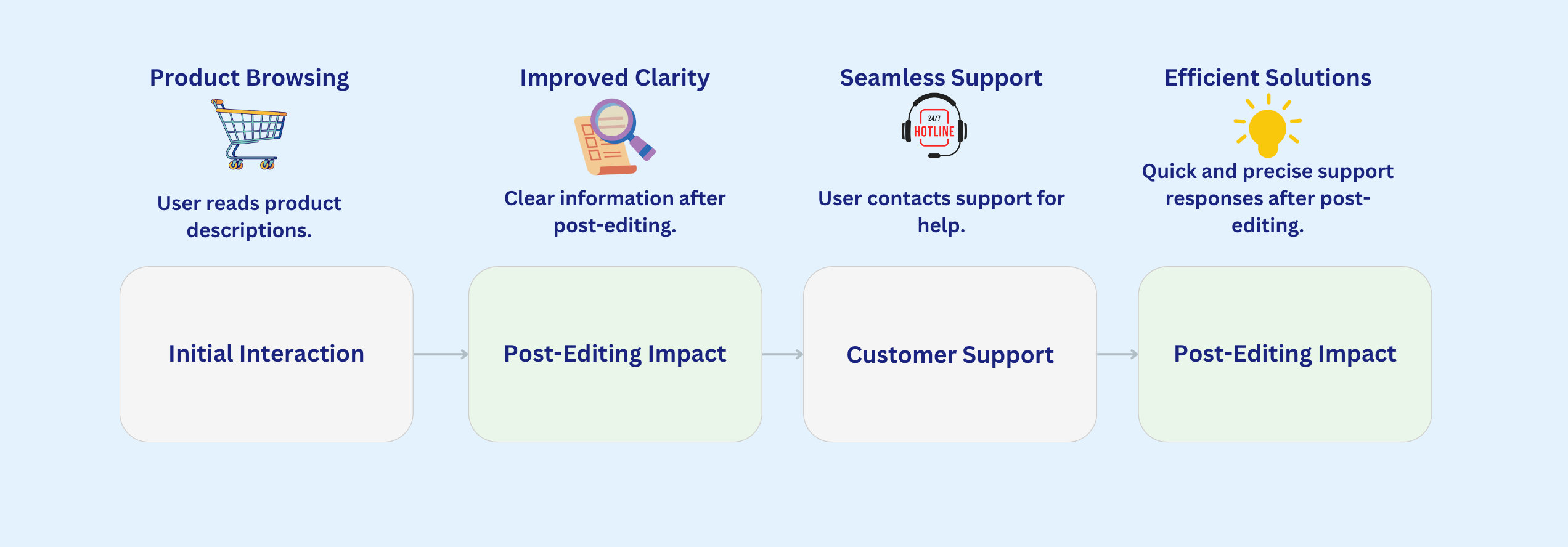
Picture an online store where product categories are mixed up because of translation errors. That would lead to a bad shopping experience, right? It will cause users to leave your site. Post-editing helps prevent these issues and allow you have a smooth and easy interaction with your users!
Can Post-Editing Save You Money?
The answer to this question is yes! Investing in post-editing can quickly pay off by preventing costly mistakes and protecting your brand.
For example, a mistranslated legal disclaimer could lead to misunderstandings and legal problems. But by making sure your translations are correct, post-editing protects your business from these risks. As a result, it saves your money, and not just that, it also gives your brand a good name.
So, in the long run, the benefits are worth the cost. It improves the quality of your content, strengthens your brand, and gives users a better experience, all of which help increase customer loyalty and business success.
Now that you have gotten a glimpse of the value of post-editing, you can make smart choices that can help your business grow globally.
How Does the Post-Editing Process Work?
Knowing how post-editing works can help you turn automated translations into high-quality content. Professional translators play an important role in the post-editing phase to make sure that translations meet high-quality standards. The process is broken down into three main phases:
- Pre-production
- Production
- Post-production
Let’s quickly take a look at each of these phases and understand why they are important.
What Happens in the Pre-Production Phase?
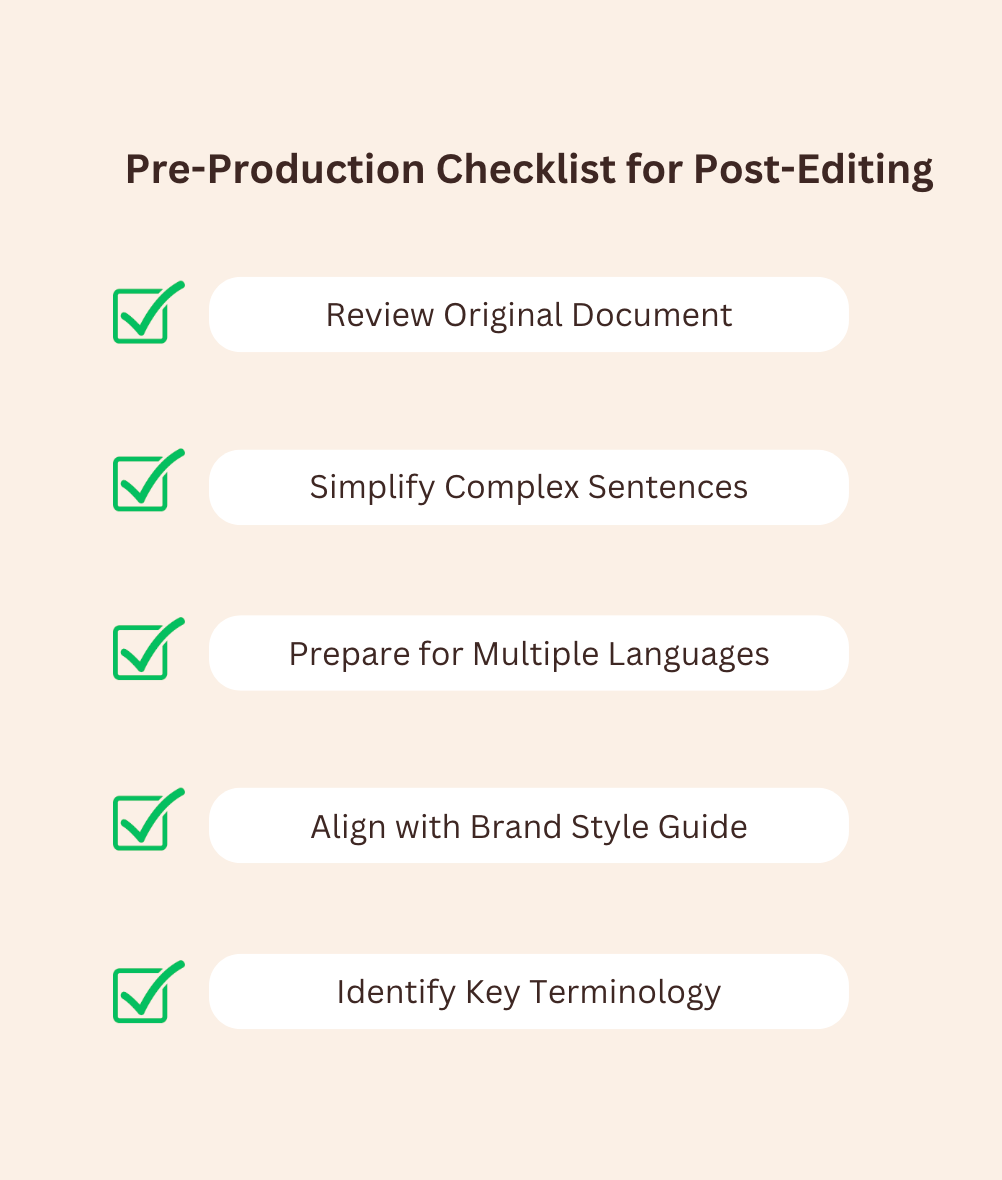
During the pre-production phase, thorough preparation is essential. This is the stage where you lay the groundwork for successful translations. It involves reviewing the original document to ensure that it is well-written and clear. Doing so will help the automated translation system generate better translations.
You might also adjust the text to avoid complex sentences or ambiguous terms. If your document will be translated into multiple languages, pre-editing is especially helpful.
This phase is flexible and can be customized to fit different projects or industries. For instance, technical documents may need more pre-editing than marketing materials.
What Is Done During the Production Phase?
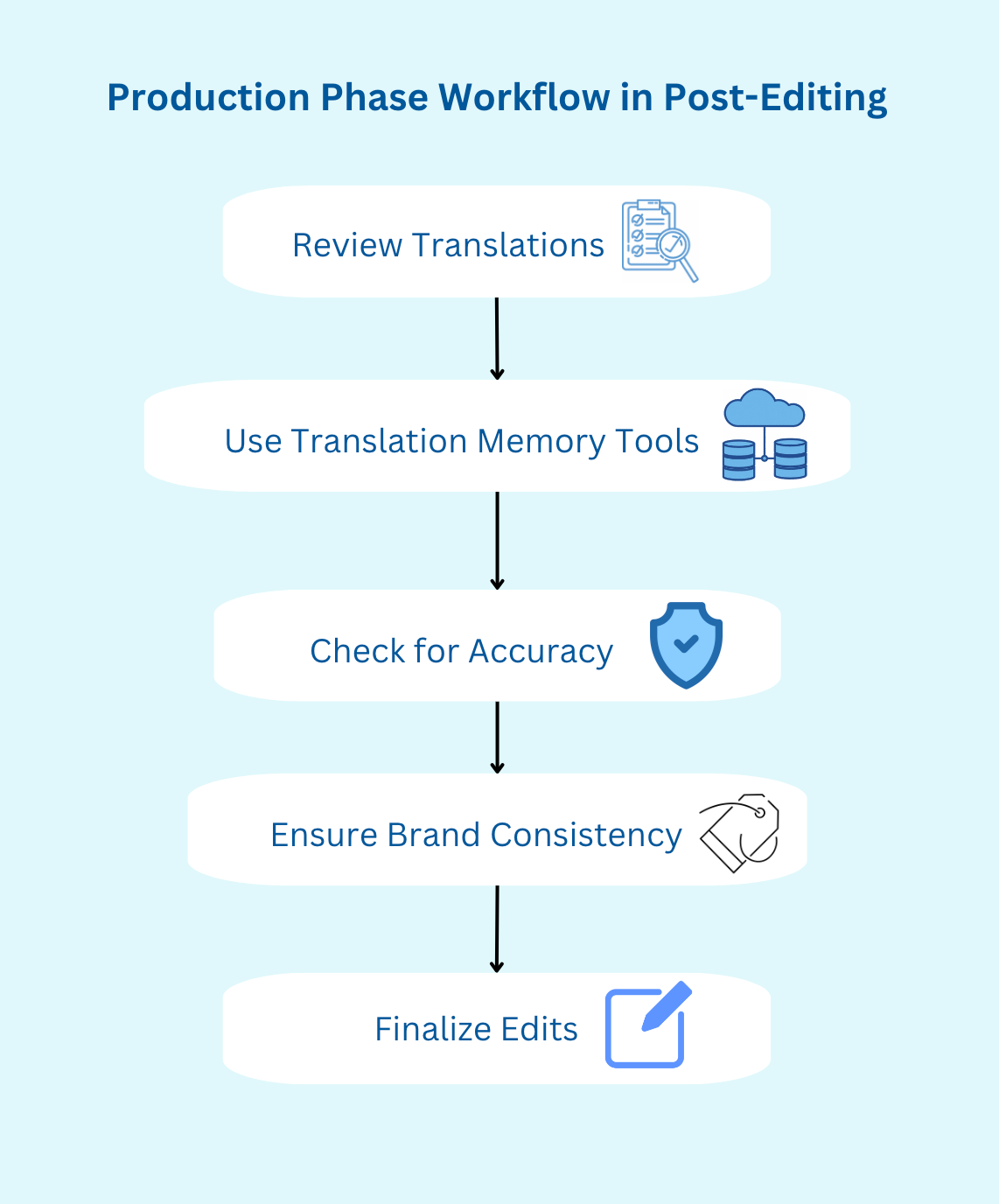
The production phase is where the actual post-editing takes place. Here, a skilled post-editor reviews the automated translation and makes necessary corrections. They focus on achieving accuracy, proper style, and brand consistency.
This phase also involves using tools like translation memory and terminology management to maintain consistency across different parts of the document.
Just like pre-production, this phase can be tailored to suit the needs of your specific industry or project. For example, a legal document might require more attention to detail than a casual blog post.
Why Is the Post-Production Phase Important?
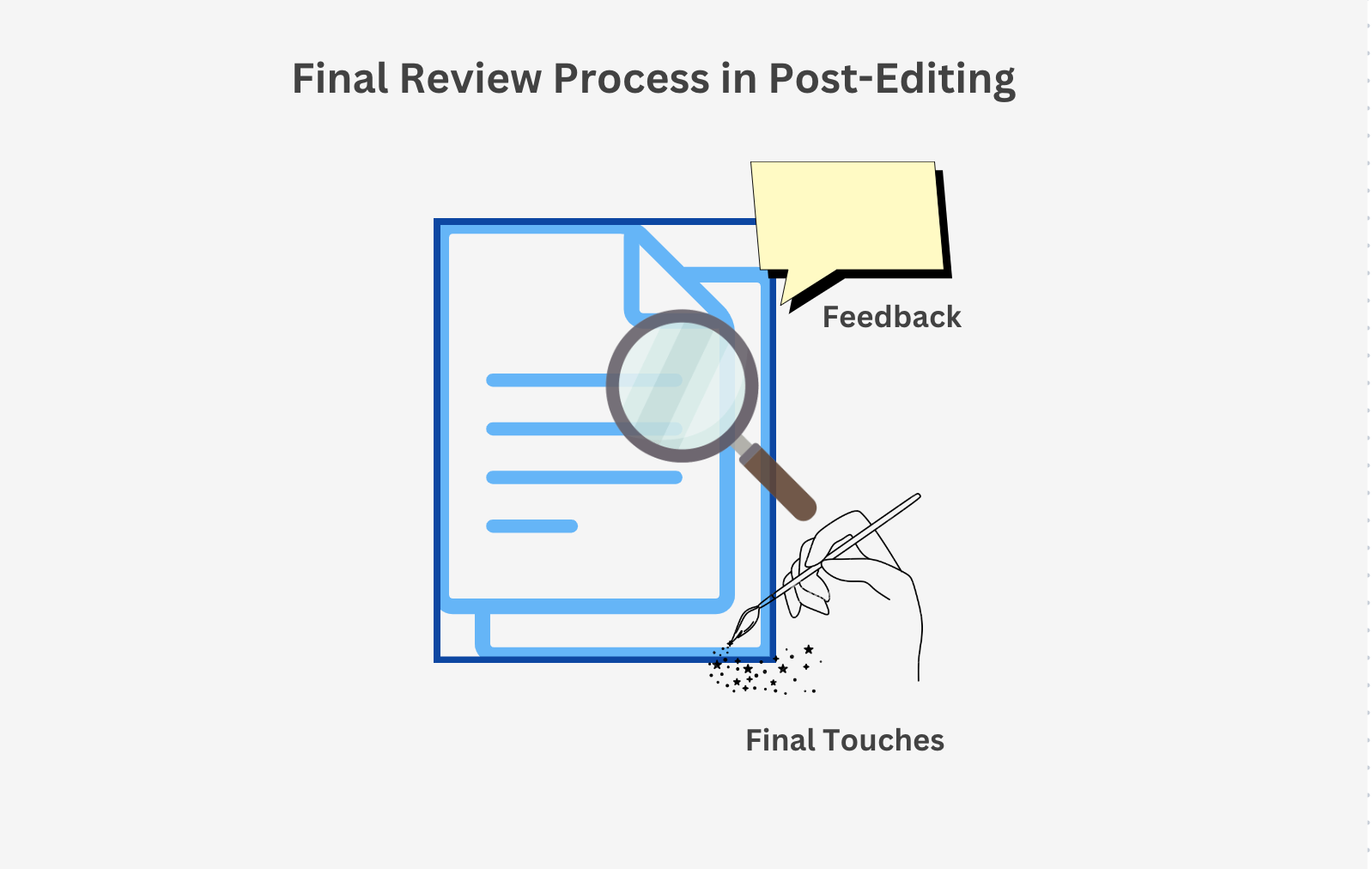
The post-production phase is the final step, where everything is post-edited and finalized. In this phase, the translated document, is reviewed to catch any remaining errors. This goal is to make sure the translation meets all quality standards and is ready for the intended audience.
This phase may also involve receiving feedback and making final adjustments. It’s a chance to make sure everything aligns with your brand and project goals.
The post-production phase is also adaptable. Different projects might need different types of review, such as an extra check for cultural differences in marketing materials.
What Tools Help the Post-Editing Process?
When you’re working on post-editing, having the right tools can make a big difference. They help you simplify the process and improve the quality of your automated translations. Let’s look at some tools that can really help.
First, there are translation platforms like TextUnited that combine everything you need in one place. They have features like a collection of machine translation engines to choose from, and integrated translation memory, which retains past human-corrected translations and suggests them when similar content appears.
So, this keeps your translations consistent and saves you time.
Then there are terminology management tools that make sure key terms are always used correctly. For example, if your company prefers the word “client” over “customer”, these tools will help you stick to that choice every time.
Here are some tools that can support your post-editing work:
- Translation Platforms: Manage and edit translations in one place.
- Computer-Assisted Translation (CAT) Tools: Use previous translations to keep things consistent.
- Terminology Management Tools: Enforce the use of preferred terms.
- Quality Assurance Tools: Catch errors automatically, so you can focus on clarity.
What Challenges Arise During Post-Editing and How Are They Addressed?
Post-editing can come with its own set of challenges. You might face issues like terminology inconsistency, where key terms are not used consistently, or overly literal translations that don’t sound natural.
These problems can make your translations less reliable and harder to understand.
TextUnited to the Rescue!
TextUnited can help you with these challenges. Our platform includes terminology management tools that keep your terms consistent across all translations.
This means you don’t have to worry about variations in important terms. For overly literal translations, our tools help by suggesting more natural phrasing that matches your brand’s voice.
Plus, TextUnited recognizes that some language might need a different approach. In some cases, it’s better to translate from scratch rather than edit automated translations.
Our platforms supports this flexibility to make sure you get the best results for each language.
Final Thoughts
Post-editing can help your automated translations become clear and reliable. It fixes errors and keeps your brand’s voice consistent across all languages. Adding post-editing to your workflow is key to getting better quality and uniform translations.
By post editing machine translation, you can be sure your content is both accurate and aligned with your brand guidelines.
Why not try TextUnited’s post-editing solutions? Our tools are designed to help you make your translations the best they can be. If you have any questions or want personalized advice, reach out to us. We’re here to support you in optimizing your translation process. Click here to sign up for a free trial today!
Helpful Resources
You may find the following resources helpful:
- When to Choose Machine Translation vs. Human Post-editing
- Why Translation Memory Matters?
- Why Subscription-Based Translation Is the Future of Localization
- Localize Your Website with Subscription-Based Translation Services
- Save on Translation Costs with Subscription-Based Services
- The Best PDF Translation Solution: How TextUnited Meets Your Needs
- How to Manage E-Learning Translations: Centralized vs. Regional Approaches
- Cheap Translation Services: How to Translate Documents Quickly and Affordably
- AI Translation vs. Translation Agencies: Which Is Best for Your Business?

